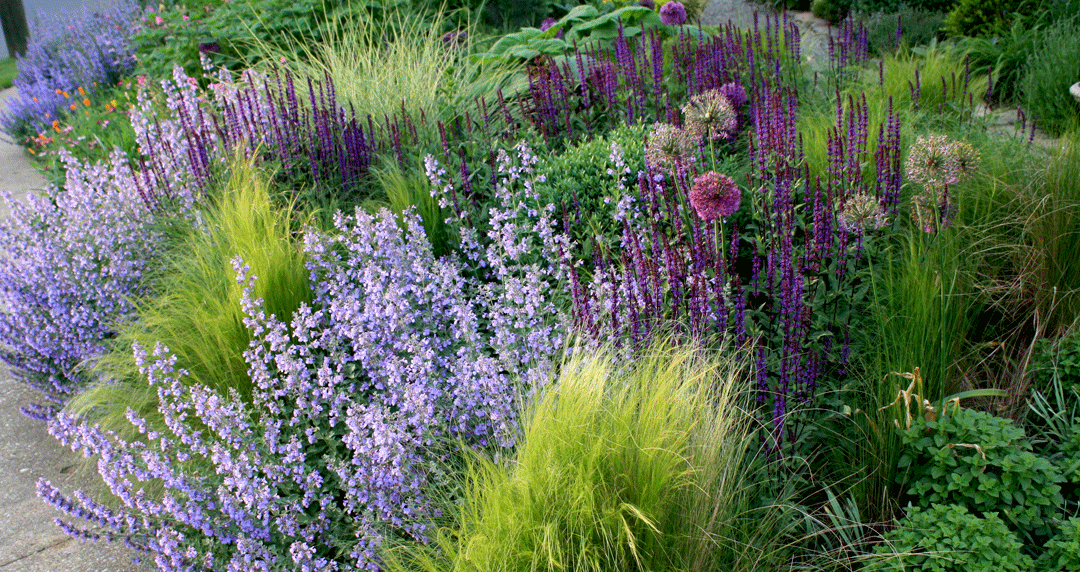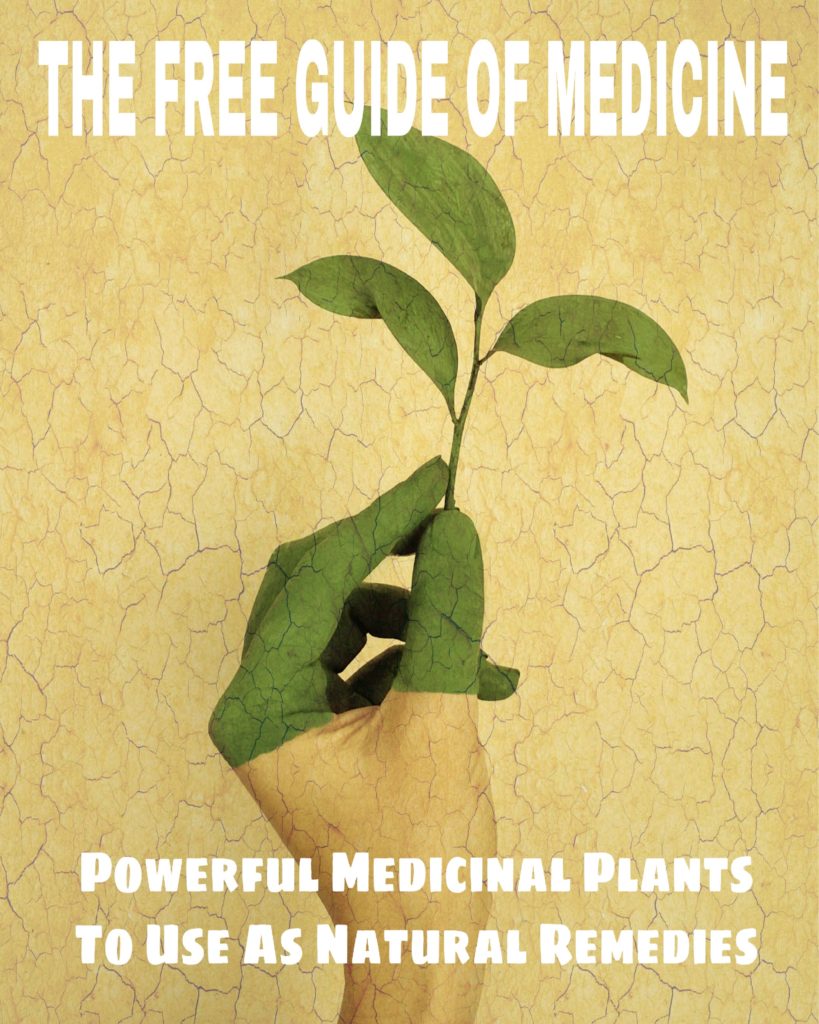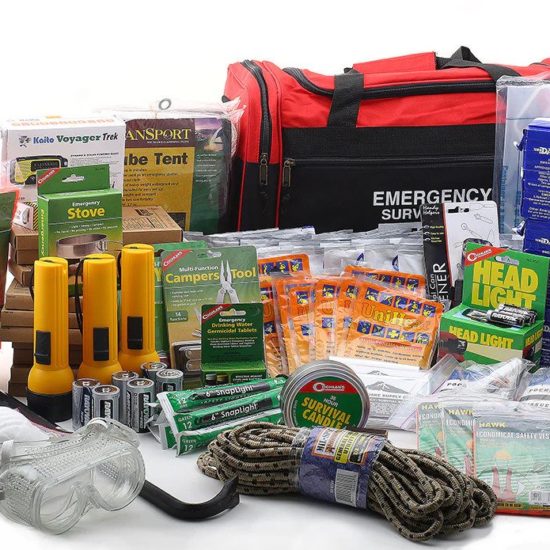
This is a field guide to the most common plants found throughout the United States. When traveling outside of the southwest I often found myself lost when it came to what plants I could seek to use in a given territory. This list is based on my research documenting where useful plants are found in the United States, based on the USDA Flora Database.
Once the five most common plants per state were identified we studied many sources, both native and academic, to document how people can use these plants. Sources often refer to plant edibility or medicinal values, yet neglect to specify what parts of the plant to use and recommended preparation methods. Find out here exactly how you can use some of them.
A FREE Guide of powerful plants that you can use as natural remedies.

This is free knowledge. Just so you know. What’s inside this FREE Guide of Medicine?
Ginger’s been shown to be anti-cancer, anti-inflammatory, and it helps regulate blood sugar. Mullein (one of my favorites) can kill worms in the body, may kill TB, and may kill pneumonia, e. Coli, and other bacterial infections. Lavender has been shown to promote sleep and relaxation, and as a pain reliever (among other things!).
That’s just a small sample of what natural remedies can do! There are many other herbs, and many other uses! You will see more examples in this short guide.
Natural remedies are less Poisonous if taken properly. Pharmaceuticals cost more, and are the third leading cause of deaths in the world. Herbal medicines have been around for thousands of years, and have saved more lives, than people give them credit for. Pharmaceuticals steal one chemical from a plant, and discard the other beneficial compounds and enzymes in the plant, because you cannot patent a plant, unless it is genetically altered. A famous Philosopher said “Let thy food, be thy medicine”.
So let’s see what America is “forced” to eat, state by state.
#1. Alabama
- Blackberry
- Wild Carrot
- Oxalis
- Muscadine
- Persimmon
#2. Alaska
- Beach Greens
- Beach Lovage
- Chickweed
- Dandelion
- Fiddlehead Fern
#3. Arizona
- Hedgehog Cactus
- Saguaro
- Cholla
- Prickly Pear
- Barrel Cactus
#4. Arkansas
- Cattail
- Chicory
- Curled Dock
- Asparagus
- Amaranth
#5. California
- Fireweed
- Wood Sorrel
- Dandelion
- Bull Thistle
- Curly Dock
#6.Colorado
- Wild Onion
- Stonecrop
- Candytuft
- Bistort
- Yucca buds
#7.Connecticut
- Violets
- Lesser Celandine
- Primrose
- Field Garlic
- Lungwort
#8. Delaware
- Wild Mustards
- Cicely Root
- Bittercress
- Stinging Nettle
- Fiddleheads
#9.Florida
- Sea Grape
- Dewberry
- Purslane
- Jerusalem Artichoke
- Dogwood
#10. Georgia
- Eastern Persimmon
- Chinquapin
- White Bergamot
- Pecan
- Maypop
#11. Hawaii
- Kukui
- Breadfruit
- Seagrape
- Chinese Hibiscus
- Noni
#12. Idaho
- Thimbleberries
- Serviceberries
- Camas
- Fireweed Jelly
- Stinging Nettle
#13. Illinois
- Acorn
- Plantains
- Poke
- Morels
- Chantarelles
#14. Indiana
- Kudzu
- Lamb’s Quarters
- Pine
- Prickly Pear
- Cactus
#15. Iowa
- Coltsfoot
- Clovers
- Hazelnuts
- Pecans
- Daylily
#16. Kansas
- Wood Sorrel
- Wild Mustard
- Sheep Sorrel
- Purslane
- Yellow Rocket
#17. Kentucky
- Wild Grape Vine
- Common Mullein
- Prickly Pear Cactus
- Milk Thistle
- Pineapple Weed
#18. Louisiana
- Mallow
- Wild Bee Balm
- Sweet Rocket
- Field Pennycress
- Miner’s Lettuce
#19. Maine
- Common Mallow
- Shepherd’s Purse
- Self-Heal
- Monkey Flower
- Fireweed
#20. Maryland
- Pigweed
- Joe Pye Weed
- Goosetongue
- Lamb’s Quarters
- Watercress
#21. Massachusetts
- Wild Garlic
- Plantain
- Herb Robert
- Hop Clover
- Chickweed
#22. Michigan
- Garlic Mustard
- Cattail
- Coltsfoot
- Clovers
- Hazelnuts
#23. Minnesota
- Pecans
- Daylily
- Fireweed
- Dandelion
- Chickweed
#24. Mississippi
- Curly Dock
- Asparagus
- Chicory
- Wood Sorrel
- Bull Thistle
#25. Missouri
- Alfalfa
- Broadleaf Plantain
- Creeping Charlie
- Forget Me Not
- Garlic Mustard
#26. Montana
- Wild Black Cherry
- Harebell
- Elderberry
- Field Pennycress
- Coneflower
#27. Nebraska
- Kudzu
- Meadowsweet
- Mallow
- Peppergrass
- Pineapple Weed
#28. Nevada
- Pickerelweed
- Mullein
- Red Clover
- Partridgeberry
- Sheep Sorrel
#29. New Hampshire
- Shepherd’s Purse
- Sunflower
- Spring Beauty
- Tea Plant
- Toothwort
#30. New Jersey
- Teasel
- Wild Grape Vine
- Wild Bee Balm
- Vervain Mallow
- Prickly Pear Cactus
#31. New Mexico
- Herb Robert
- Mayapple
- Joe Pye Weed
- Knapweed
- Wild Leek
#32. New York
- Cleavers
- Cattail
- Blue Vervain
- Common Yarrow
- Common Sow Thistle
#33. North Carolina
- Coltsfoot
- Fern Leaf Yarrow
- Henbit
- Crimson Clover
- Evening Primrose
#34. North Dakota
- Downy Yellow Violet
- Daisy Fleabane
- Japanese Knotweed
- Milk Thistle
- Lambs Quarters
#35. Ohio
- Queen Anne’s Lace
- Purple Deadnettle
- New England Aster
- Supplejack Vine
- Amaranth
#36. Oklahoma
- American Black Currant
- Anise Hyssop
- Apple Mint
- Bee Balm
- Blackberry
#37. Oregon
- Black Raspberry
- Blueberry Highbush
- Breadseed Poppy
- Broad Leaf Dock
- Burdock
#38. Pennsylvania
- Chickweed
- Comfrey
- Dame’s Rocket
- Dandelion
- Dayflower
#39. Rhode Island
- Day Lily
- Egyptian Onion
- Elderberry
- European Black Currant
- Field Garlic
#40. South Carolina
- Garlic Mustard
- Gill-Over-The-Ground
- Gooseberry
- Hollyhock Mallow
- Jerusalem Artichoke
#41. South Dakota
- Lamb’s Quarter
- Lemon Balm
- Mallow
- Musk Mallow
- Nettle
#42. Tennessee
- Peppermint
- Purple Dead Nettle
- Purslane
- Red Clover
- Red Currant
#43. Texas
- Red Raspberry
- Rose
- Schizandra
- Sheep Sorrel
- Shirley Poppy
#44. Utah
- Star Chickweed
- Sweet Cicely
- Violet
- Wild Bergamot
- Wild Grape
#45. Vermont
- Wild Lettuce
- Wood Sorrel
- Yellow Dock
- Spearmint
- Chicory
#46. Virginia
- Curly Dock
- Daylily
- Elderberry
- Fireweed
- Japanese Knotweed
#47. Washington
- Meadowsweet
- Milkweed
- Mullein
- Queen Anne’s Lace
- Yarrow
#48. West Virginia
- Balsam Fir
- Blue Aster
- Bracken Fern
- Oak (Acorns)
- Pine
- White Birch
#49. Wisconsin
- Wood Sorrel
- Arrowhead/Wapato
- Bullrushes
- Bur-Reed
- Cattail
#50. Wyoming
- False Solomn’s Seal
- Weeping Willow
- Wild Rice
- Amaranth
- Blackberries
Do you know how to use these plants? Do you know anything about their powers? Would you be surprised to find out that our ancestors were way more in touch with nature and it’s powerful natural remedies? Maybe we should start learning a thing or two from our history. Why should we trust our ancestors so much? If they were not doing a good job, we wouldn’t be here today. Simple as that.
And so is our offer today.
A FREE Guide of powerful plants that you can use as natural remedies.

This is free knowledge. Just so you know. Enjoy!



















